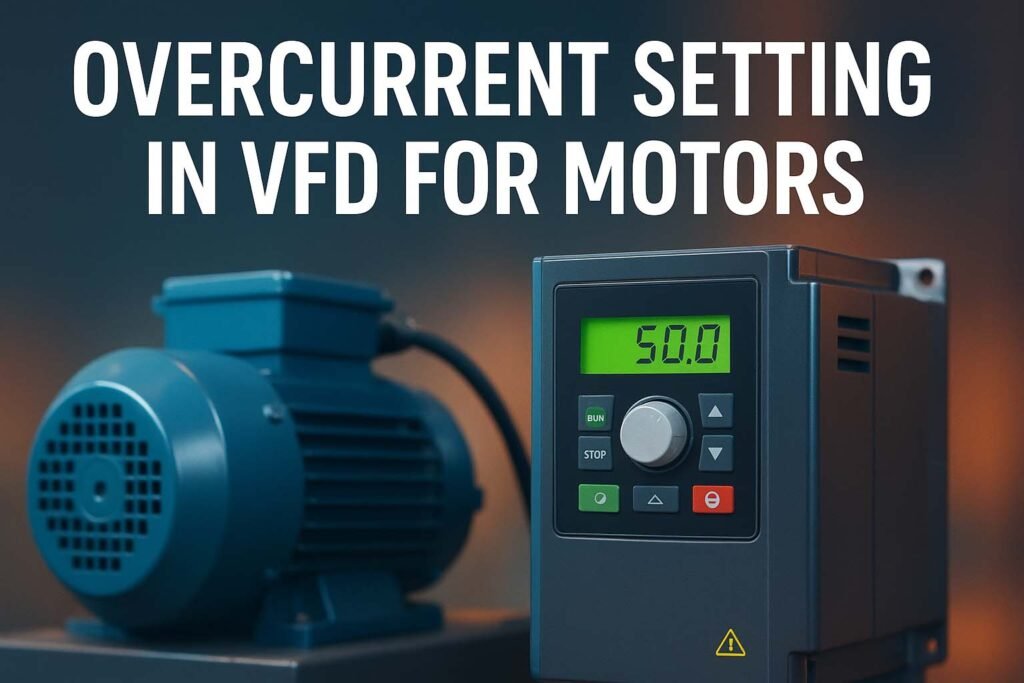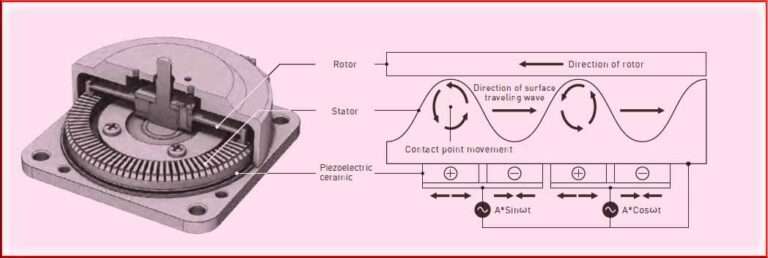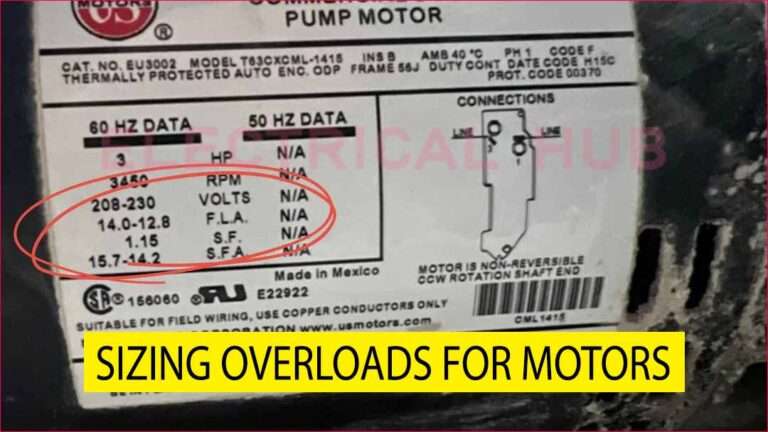Overcurrent Setting in VFD for Motors: Best Guide
When using a variable frequency drive (VFD) to control an electric motor, one of the most critical protections to configure is the overcurrent setting in VFD for motors. Incorrect settings can cause nuisance tripping, motor overheating, or even permanent damage. Many technicians and engineers face challenges when balancing motor protection with continuous operation. Understanding how overcurrent protection works in VFDs is essential to reduce downtime, improve efficiency, and extend equipment life.
Table of Contents
Table of Contents

This article explores the fundamentals of overcurrent protection in VFDs, recommended practices for setting values, technical insights from real-world applications, and common mistakes to avoid. If you are facing issues such as a motor overload tripping problem, you can refer to the detailed guide linked here for deeper troubleshooting insights.
Before diving deeper, let us summarize the key takeaways for quick reference.
Key Takeaways
- Overcurrent setting in VFD for motors protects against excessive current caused by overloads, short circuits, or mechanical jamming.
- The setting must be chosen according to motor rated current, service factor, and application conditions.
- Incorrect settings either cause nuisance tripping or risk of severe motor damage.
- Modern VFDs offer programmable protection features that must be tuned with care.
What is Overcurrent Setting in VFD for Motors?
The overcurrent setting in VFD for motors defines the current level above which the VFD trips to protect both motor and drive. It acts like a safety shield, limiting current to a safe level. VFDs constantly monitor current through current transformers or shunt resistors and compare it with the configured trip setting.
For example, if a motor is rated at 20 A full load current (FLC), the overcurrent setting might typically be in the range of 110% to 125% of FLC depending on the application. This means the drive will trip if motor current exceeds 22–25 A for a defined time.
Overcurrent is not only a sign of electrical stress but also of mechanical problems. Jammed pumps, overloaded conveyors, or wrong speed settings can trigger such events. That is why engineers must carefully balance the trip threshold to avoid both false alarms and dangerous overheating.
Know more about MCC Panel Design Guide – IEC Standards, Wiring Diagram, Cost, and Sizing Calculations (Excel Template)
Importance of Correct Overcurrent Setting in VFD for Motors
The correct overcurrent setting in VFD for motors ensures both safety and reliability. Motors are expensive assets, and downtime can cost thousands in lost production. If the VFD allows excessive current, windings can overheat and insulation may fail. On the other hand, if the threshold is too tight, the drive may trip frequently, disturbing process continuity.
VFDs also protect themselves. Semiconductor switches like IGBTs are sensitive to current surges. Overcurrent settings safeguard these components, preventing costly replacements. Therefore, the correct configuration benefits both motor and VFD.
How Overcurrent Protection Works in VFDs
VFDs implement overcurrent protection using multiple layers. The following methods are commonly integrated:
- Instantaneous Overcurrent: Trips immediately when current rises to a dangerous level, protecting semiconductors.
- Overload Protection (I²t): Measures current over time, ensuring that short overloads are tolerated but long ones are tripped.
- Current Limit Function: Restricts motor torque by reducing output voltage, keeping current within limits.
The table below summarizes the difference between these functions:
| Protection Type | Response Time | Purpose | Example Setting |
|---|---|---|---|
| Instantaneous Overcurrent | Microseconds to ms | Protects VFD electronics | 200–250% FLC |
| Overload (I²t) | Seconds to minutes | Prevents motor overheating | 110–125% FLC |
| Current Limit | Continuous regulation | Avoids tripping by limiting torque | 100–120% FLC |
Guidelines for Setting Overcurrent Protection
When setting the overcurrent protection in VFD for motors, engineers must consider several factors:
- Motor Full Load Current (FLC): The nameplate current is the base reference.
- Service Factor: Motors with higher service factors can handle slightly higher overloads.
- Application Type: Variable torque loads (fans, pumps) usually require tighter limits, while constant torque loads (mixers, conveyors) may allow higher limits.
- Thermal Environment: Poor cooling or high ambient temperature reduces motor overload capacity.
- Drive Manufacturer Guidelines: Each VFD brand provides recommended settings.
Know more about Best Industrial Electric Motor Manufacturers Near Virginia
For a 15 kW motor with FLC of 30 A, a typical overload protection range might be 33–37.5 A (110–125%). However, instantaneous trip may be set at around 70–80 A to quickly isolate severe faults.
Technical Insights on Overcurrent Setting in VFD for Motors
In real practice, engineers often face difficulties because of the mismatch between theory and application. Here are some technical insights:
- Motors driving high-inertia loads, such as crushers, draw higher current during starting. VFD soft start helps reduce inrush, but settings must still account for this.
- If the VFD trips during acceleration, the current limit parameter should be reviewed instead of only raising overcurrent threshold.
- Harmonics from VFD switching can slightly increase RMS current, so actual motor heating may be higher than expected.
- Cooling fans inside motors operate at motor shaft speed. At low VFD speeds, motor cooling reduces, so overcurrent settings must be stricter at low frequencies.
- Some advanced drives allow different overcurrent curves for acceleration, running, and deceleration stages. This flexibility is useful in demanding industries.
Common Causes of Overcurrent Trips
Engineers often misdiagnose overcurrent faults. The main causes include:
- Sudden load changes like material jamming in conveyors.
- Mechanical misalignment increasing torque demand.
- Incorrect motor parameter programming in VFD.
- Short circuits or insulation failures.
- Too low current limit parameter, causing premature trip.
Identifying the root cause is as important as adjusting the setting. Otherwise, the same fault will repeat.
Know more about Industrial Electric Motor Manufacturers Near Washington, DC
Best Practices for Overcurrent Setting in VFD for Motors
To configure the overcurrent setting in VFD for motors effectively, follow these best practices:
- Always start with motor nameplate current as the base.
- Use thermal overload protection within 110–125% of FLC.
- Keep instantaneous overcurrent protection within manufacturer guidelines.
- Monitor actual running current under different loads before finalizing settings.
- Avoid raising trip limits too high just to prevent nuisance tripping. Instead, solve underlying load issues.
- Document all parameter changes for future maintenance reference.
Troubleshooting Overcurrent Trips in VFDs
If your motor is experiencing frequent overcurrent trips, follow a step-by-step troubleshooting approach:
- Check Load Conditions: Ensure there is no mechanical jamming.
- Verify Motor Data: FLC, rated voltage, and frequency must match VFD settings.
- Measure Current: Compare actual running current with settings.
- Review VFD Parameters: Acceleration time, torque boost, and current limit.
- Check Cable and Motor Health: Look for insulation damage or phase imbalance.
This systematic method avoids random parameter changes and ensures reliability.
Know more about Top 10 Electric Motor Manufacturers in the World
Example of Setting Overcurrent Protection
Consider a 22 kW motor rated at 42 A FLC. The VFD settings may look like this:
- Overload protection (I²t): 46–52 A
- Instantaneous overcurrent trip: 90–100 A
- Current limit: 45–48 A
Such configuration ensures that the motor is protected against overheating, while still allowing short overloads for process stability.
Future Trends in Overcurrent Protection for VFDs
With the rise of smart drives and IoT, modern VFDs are going beyond basic overcurrent protection. They now integrate:
- Predictive fault diagnostics using machine learning.
- Real-time thermal models of motors for precise protection.
- Cloud connectivity for remote monitoring of current trends.
- Auto-tuning of protection curves based on motor history.
These features reduce the risk of human error and improve long-term reliability.
Know more about What Causes a Motor to Overload?
Conclusion
The overcurrent setting in VFD for motors is one of the most important configurations for safe motor operation. Correct settings ensure a balance between motor protection and process continuity. Always base settings on motor rated current, application type, and manufacturer guidelines. Avoid simply increasing trip thresholds to stop nuisance faults; instead, investigate root causes like load jamming or incorrect parameters.
If you are experiencing repeated shutdowns due to overloads, you may be facing a motor overload tripping problem. You can explore more about its causes and solutions in our detailed guide linked earlier. By applying the right knowledge and best practices, engineers can maximize both motor life and plant productivity.
Follow Us on Social:
Subscribe our Newsletter on Electrical Insights to get the latest updates in Electrical Engineering.
#OvercurrentSetting, #VFDMotors, #MotorOverload, #VFDProtection, #MotorProtection, #ElectricalEngineering, #IndustrialAutomation, #VFDSettings, #MotorSafety, #VariableFrequencyDrive, #MotorControl, #OvercurrentProtection, #ElectricalSafety, #PowerElectronics, #MotorDrives





